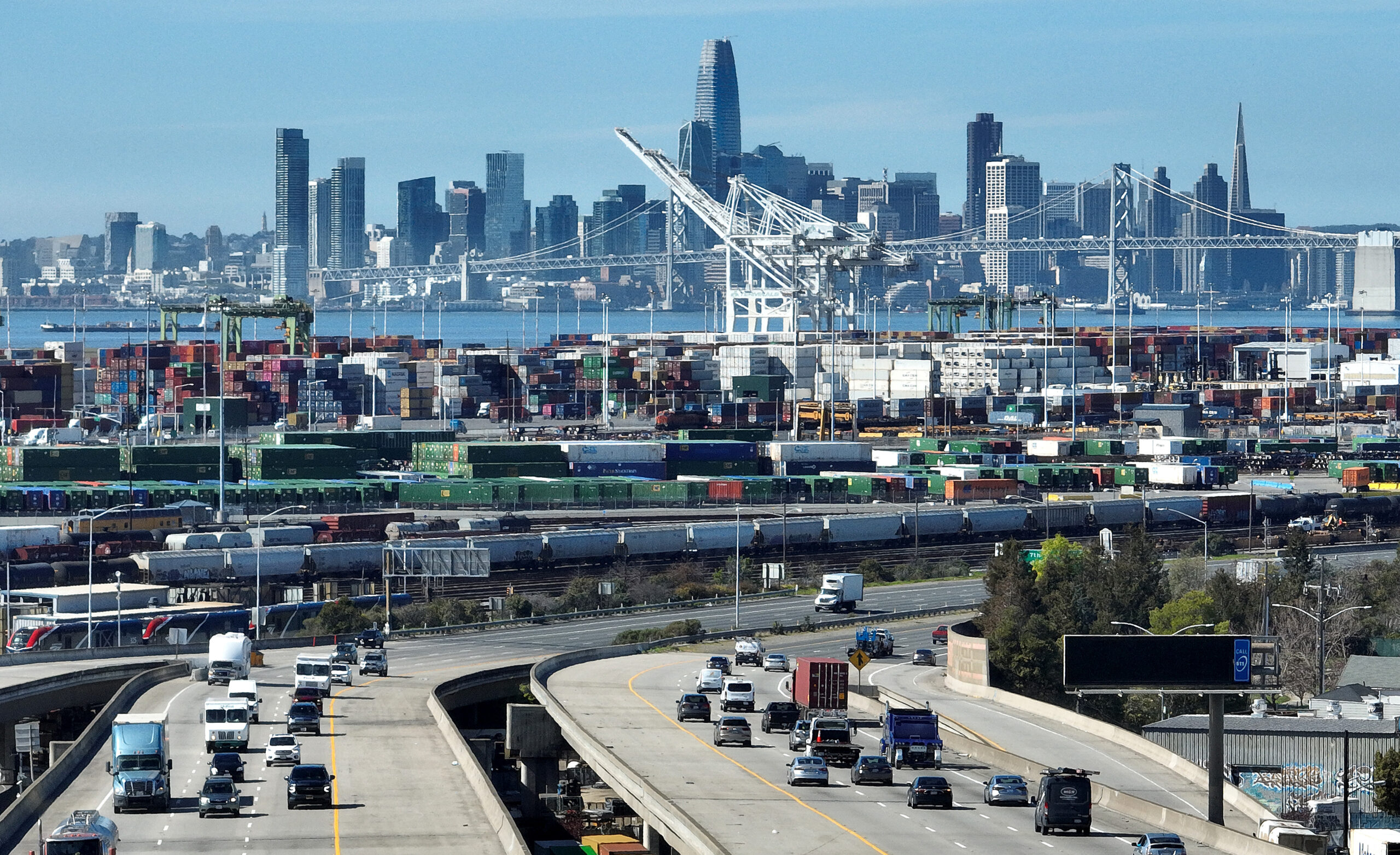
OAKLAND, CALIFORNIA – MARCH 02: In an aerial view, a crane at the Port of Oakland stands in front of the San Francisco skyline on March 02, 2023 in Oakland, California. Global ocean shipping companies are facing declines as exports slow and freight rates drop. Justin Sullivan/Getty Images/AFP (Photo by JUSTIN SULLIVAN / GETTY IMAGES NORTH AMERICA / Getty Images via AFP)
Washington, United States — The US trade gap grew slightly less than expected in May, to the widest level since late 2022, government data showed on Wednesday, as exports and imports both slipped.
The overall deficit grew to $75.1 billion, from a revised $74.5 billion in April, said the Commerce Department.
While this was the largest since October 2022, analysts had initially expected the gap to be the biggest in two years.
READ: US trade gap widens to largest in 18 months
Even though US consumption has been resilient in the face of higher interest rates, domestic demand has lost steam and there have been concerns that export growth would weaken.
Exports fell more than imports in May, with outbound shipments coming in at $261.7 billion — down by $1.8 billion from April.
This came as exports of industrial supplies and materials fell by $2.1 billion.
Imports were $1.2 billion less than in April, at $336.7 billion, the report added.
Among segments, imports of consumer goods retreated by $2.0 billion — with a decrease in areas like pharmaceutical preparations only partially offset by increases in cell phones and other household goods.
READ: US trade deficit widens in January on imports
Imports of autos and parts also fell by $1.5 billion, said the Commerce Department.
The US goods deficit with China, which had been a point of contention between the world’s two biggest economies, increased by $1.9 billion to $23.9 billion in May.
“After nearly two years of positive contributions to growth, trade has been a substantial weight,” said Matthew Martin, US economist at Oxford Economics.
“Though imports have grown on balance this year, exports have struggled amid a strong dollar and weak global demand, both of which will take time to abate,” he added.
But he expects wage gains and easing inflation to help support growth this year.